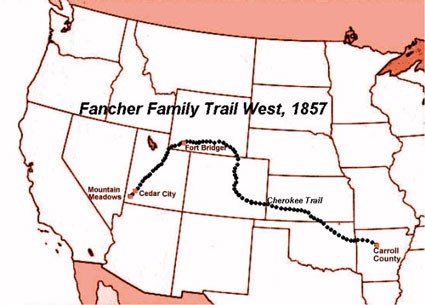
Looking through old Greenville newspapers from 1906 I found a couple of articles that caught my attention. They came from the community of Pompey, a local spelling of Pompeii, the town in Italy destroyed in 79 A.D. when buried by ashes as Mount Vesuvius erupted.
A quick glance of the 1900 census shows that the population of Pompey were primarily farmers, some land owners while others were tenants. Also, in the community were carpenters, painters, railroad workers, and even an attorney. Every home with children reported that the youngsters went to school on a regular basis. Much more sophisticated than many families in Northeast Texas.
That land was legally owned by James R. Horton, Charles A. Warfield and A. McDonald shortly after the county was created in 1846. An 1859 map shows the same three men still owned the land. The exact location of Pompey has not been found. Using multiple maps and list of public schools in Hunt County, only one school lists Pompey (spelled Pompay) School. No map shows the local of a school with that name, no matter how it was spelled. Yet many old-timers in the area tell stories about the school, its founding, and the early group who settled there.
According to those stories, a large wagon train left Carroll County, Arkansas in 1857, heading west to California and all its riches. It was the Baker-Fancher group who were later that year violently murdered in the 1857 Mountain Meadow Murder in Utah.
Supposedly a few of those wagons somehow found themselves away from the main wagon train and made a wrong turn. Anyhow, the story continues by saying that the lost wagons ended up in what is now Hunt County. They settled along the east bank of Cow Leech Creek, near where the creek crosses Interstate 30 today.
The families built the Pompey School at some point. It appears that by 1900 the community was inhabited with Democratic Progressives. Around 1890 large groups of farmers and residents of small communities became concerned about economic and social problems attributed to the rapid industrialization introduced in America. Such people began quiet social activism and political reform. They focused on female suffrage, education for all, better working conditions, unionization, and child labor. Greenville’s own Kyle G. Wilkison wrote Yeomen, Sharecroppers, and Socialists: Plain Folk Protest in Texas, 1870-1914. Yep, there were socialists in Hunt County, especially in the east and south part of the county. I highly recommend Dr. Wilkinson’s book.
Pompey school developed a lecture series in 1906. The very first speaker was Judge V. W. Grubbs. His topic was “Progress of the Movement.” Grubbs was a zealot about temperance and vocational education. So, whether he addressed those two issues, or Democratic Progressivism is unknown; but any of the three would be a subject Grubbs was competent to speak on. Incidentally the title Judge was like Colonel, strictly honorary.
The next speaker was Prof. J. A. Thomas who advocated “School Training as a Business.”
Several colleges existed in Hunt County at that time. Perhaps Thomas taught at one. President W. I. Gibson of Burleson College spoke on “Onion Culture.” Audiences heard “Cabbage Growing” from S. L. Dial, “Fertilizers” from Ike Holbrook, “Up and Down of a Merchant” by Joe Dial, “Strawberries” from W. G. Perkins, and “Different Breeds of Cattle.” Notice there was no specific lecture on cotton. At that time newspapers, agriculturists, and the government were stressing diversification in farming.
At another lecture series, N. A. Kimbrough spoke of “How to Make Good Brick.” The Kimbrough family along with Horton relatives operated a brick yard on the banks of the Sabine River. The Brick Yard began operation as early as 1873. No date was on the article found.
Let me know if you have any information about Pompay (Pompey). I find it a very interesting topic.
